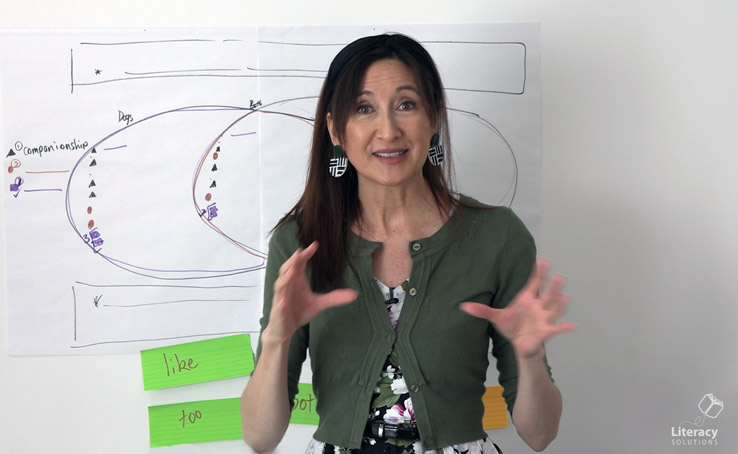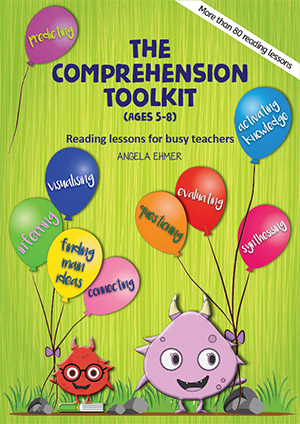Reading Stamina in Prep
What a treat it has been to visit Coomera Springs State School over the last fortnight. I had the pleasure of working for two days across the five prep classrooms to introduce reading stamina lessons to each class and then take teacher requests for writing, guided reading and whole class reading lessons. It was an exciting and dynamic two days, working with committed, passionate teachers and delightful students!
In every classroom, the children rose to each challenge and were able to move capably between explicit teaching and independent application with little fuss. Whilst instructional goals varied across classes, some of the priorities included:
- applying procedures to promote independence
- capturing data around Concepts About Print (CAP)
- whole class independent (unassisted) writing
- guided reading
It’s still early days in establishing independent reading routines, however, with continued practice and explicit teaching around implementation and procedure, this strategy should sit alongside a rich guided reading program to yield a high return.
Tips for a tight procedure:
- invite a student to demonstrate how quickly they collect their texts, move to a table, sit and begin reading without prompting
- provide explicit feedback about elements of the procedure to groups and individuals after reading
- show how important the procedure is by recording names of students able to execute elements of the procedure independently (I record students’ name directly on the chart/s and next to the step they demonstrate mastery around)
- reinforce what you wish to see replicated:
- “I love the way you read the book again, Dylan.”
- “Well done, Amy, for remembering to look at the pictures first. That’s a clever way of remembering the story, before you begin.”
- “You locked your eyes in the whole time, Jesse. You were really focused! That’s what great readers look like!”
- provide clear feedback to guide improvement:
- “I like that you all started reading right away, but I think we could be even quicker at walking to our tables. Let’s try that again … Go!”
- “Tom found it hard to balance his books on top of his pencils. Could anyone help to solve this problem?”
Tips for teaching reading strategies:
- explicitly teach problem solving activity by modelling how readers figure things out and using the “thinking aloud” strategy
- record (specific) observations of strategic problem solving (listen in as students whisper read, retell the story, infer storylines and demonstrate their understandings of story schemata)
- highlight and actively observe students as they apply strategies demonstrated by the teacher
- highlight reading actions observed on charts or other scaffolds used in the classroom (I record names on reading strategy charts which are reviewed weekly and used for whole class and later for individual goal setting). Some simple word solving charts are available here.
- always allow time for a “power chat” after reading, e.g. “Tell a friend what your book was about.” Chats can be linked to your teaching/learning intentions, e.g. If teaching “Making Connections”, the power chat might be “Find something in your book that reminds you of something else you know. Tell your friend about it.”

The reading stamina prompt cards I used with the children at Coomera Springs have been uploaded to our website. To view these cards go to: Reading Stamina Prompt Charts.
Special thanks to Taylor Hayley for coordinating and timetabling the days at Coomera Springs State School and to the dedicated and professional team of prep teachers. What a joy it was to be invited into your classrooms and to work with you and your beautiful students! Thank you!





Thanks Angela for these ideas and comments. I move through all classes during the course of my working week, not just Prep. Reading stamina is important for all students. Enjoyed your recent comprehension posters.
I have found it easier to begin with book corner / rug reading rather than tables. My students move their reading stamina to the tables later in the year. I start with a few minutes and then build slowly to 15. A visual timer tracks the session. The hardest part is curbing their enthusasim to share what they read with their friends!
Two quick, but important things I forgot to highlight . . .
1. Give students a minute for a focused chat to share what they have read. This is very important as great readers like to chat about what they read or view. Also, this provides an opportunity to observe students after reading. Who talks? What do they say? Are we hearing vocabulary from the text? Is there evidence of understanding? Who doesn’t speak?
2. The purpose of this independent reading is not the same as Uninterrupted Sustained Silent Reading (U.S.S.R.) or Free Voluntary Reading (F.V.R.). The purpose of building stamina is to build reading mileage (i.e. to increase the total number of actual words read per day and in the early stages, while reading sub skills are still being acquired, to be working on retelling, interpreting main ideas and building story knowledge). As the purpose is instructional and different to U.S.S.R. or F.V.R., students should be sitting upright and not lying down in pillows, etc. If allowing children to read on the floor, we must ensure they sit upright to prevent the metabolism from slowing.
Thank you all for sharing comments! Angela
Cheers! It’s great to have the feedback. Couldn’t agree more, sustained silent reading is near impossible in Prep. For those wishing to try then start slow and build. It can be achieved with persistence, and the students enjoy the challenge. In terms of reading mileage, we build stamina through guided reading, book club, knee to knee, etcetera. Book club is a particular favourite with the students because it allows them to discuss in detail the characters, storyline, and setting. It also allows for differentiation when linked to Blanks levels of questioning and specific learning intentions. Tracking goals visually is a great way of motivating the students’ learning. Your strategy posters are well used in our Prep rooms Angela. Am looking forward to switching to the new designs.
Thank you for the gorgeous reading stamina posters Angela…much better than my drawings on my own I do/You do poster, lol.
I love establishing reading stamina in Prep, I have done it for the last two years and I am just beginning to implement it with my new class. I find that the children love the challenge to make it to 15 or 20 mins and are definitely capable. Thanks for your tips too!
I have been supporting my Prep students to build their reading stamina. Each child has a book box with about five or six books in it. The children change these each week. When they are participating in ‘reading to self’ time they move to their reading spot with their reading box. The expectation is that they do not move from that spot. They have plenty of books to read and so don’t need to get new ones. I find this expectation helps the children to focus and not get distracted by other students wandering around. It also helps those students who can otherwise spend all their reading time, looking for a book.
I have been using Book Box to help my students to individually and independently choose their books to read.
i have been using chunking, segmenting, syllabication, rhyming and the elkonin box to help my readers.
I always do word study before they read a story.
i love your ideas. God bless you.